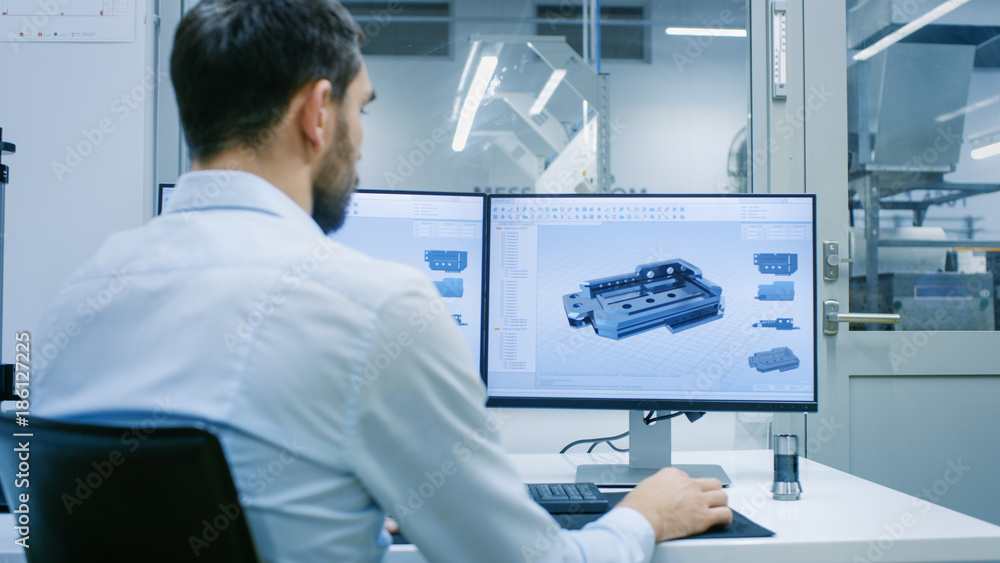
The Manufacturing Process: A Guide for Plastic Product Engineers
There are several feelings that a product design engineer might experience when starting a new project. Excitement is almost always one, but there may be a sense of urgency or even pressure as well — urgency to create a superior product, within budget and on time.
The best product design engineers will also begin with a mindset of openness and curiosity, no matter how many projects they have worked on or how long they have been in the business. When designing plastic products, this open-minded tack can pave the way for innovation, learning, and optimization within the practicalities of reality.
Along these lines, a product design engineer should know as many specifics about the plastic product manufacturing process as possible, even well-experienced designers can be forgiven for not understanding every intricacy or phase of the manufacturing end of the equation. However, as the all-important bridge from the initial plastic product design process to actual creation, an engineer needs to maintain familiarity with the steps involved in production.
At Crescent Industries, we specialize in all aspects of plastic product development, including design, engineering, and production. With decades of experience in the field, our best work is done not only by partnering with and learning from the professionals in your business but by offering our expertise as well. To that end, we have assembled a comprehensive resource for every step of the manufacturing process and summarized some key takeaways below — for full details, visit this resource guide.
The Plastic Product Manufacturing Process
This overview provides a high-level summary of the main stages in plastic product manufacturing. Most projects involve the following:
- Custom injection molding: This is the core and backbone of the manufacturing process. In custom injection molding, a mold is made according to the design and specifications of the product. Molten plastic is fed, under pressure, into the mold cavities through runners. Once the cavities have been filled, the material cools, hardens, and is ejected for further work or inspection.
- Parts decoration: Parts decoration can involve several processes, depending on the aesthetic requirements of the product. Common decoration methods include pad printing, laser marking, and painting.
- Parts assembly: Plastic molding offers a range of assembly options. Mechanical assembly, UV bonding, ultrasonic welding, and adhesive bonding are available. In addition, fasteners and assemblies could be designed directly into the part. Even methods such as over molding and insert molding can integrate assembly steps into the molding process itself.
- Machining: For metal parts and certain ultra high-precision plastic parts, machining can be used for production or additional work after molding. CNC machining is a subtractive technique that uses a variety of tool types to shape the product as needed. Alternatively, swiss screw machining feeds a small amount of exposed bar stock to be worked, allowing for highly accurate holes and other features on small parts.
- Post-molding options: Post-molding options such as annealing, plating, and vacuum deposition shielding can strengthen a part and improve its physical properties and durability. Other post-molding processes include sterilization and leak testing.
- Process validation: Process validation involves testing for melt temperature, flow rate, pressure gradient, and cooling rate/time. These assessments help ensure maximum quality, consistency, and repeatability from the mold, no matter what machine uses it.
Automation and Additive Manufacturing: Adding Quality and Value to the Process
Two additional points to consider in plastic manufacturing are robotic automation and additive manufacturing. While each serves its purpose, they both add value and improve the quality of the final product.
- Automation: Automation can be incorporated in several ways in plastic injection molding, all of which can increase the speed and accuracy of processes. Automation tools include robots for repetitive, simple, dirty, and/or dangerous tasks; visual inspection robots for baseline quality checks to support human QC; and automated work cells to integrate sequential or concurrent processes into a smaller footprint with less handling and machine-changing involved.
- Additive Manufacturing: Additive manufacturing, such as SLS or 3D printing, plays a key role through design and engineering. It can validate design concepts, test for functionality and manufacturability, and present working, production-grade prototypes. Additive manufacturing is typically faster and cheaper than most other prototyping and testing methods while providing exceptional quality and results.
At Crescent Industries, we have the expertise and capabilities to handle product development and manufacturing, from the simple to the complex. We focus on maximizing value and quality for you. For more information, contact us today.
Resources:
https://www.rodongroup.com/blog/the-importance-of-design-engineering-in-plastic-injection-molding
Topics:
Related Articles
-
Jun 30, 2025
How Medical Overmolding Enhances Devices: Key Benefits and Applications
Read MoreThe number of medical devices hitting the market is constantly rising to meet the healthcare...
-
Dec 10, 2024
Injection Molding Burn Marks: Causes and How To Avoid Them
Read MoreThe injection molding process can be complicated. If you rush your project or do not pay close...
-
Apr 02, 2024
An Expert's Approach to Injection Molding Process Development
Read MoreAre you curious about the innovation behind your flawlessly molded plastic products? Welcome to the...

